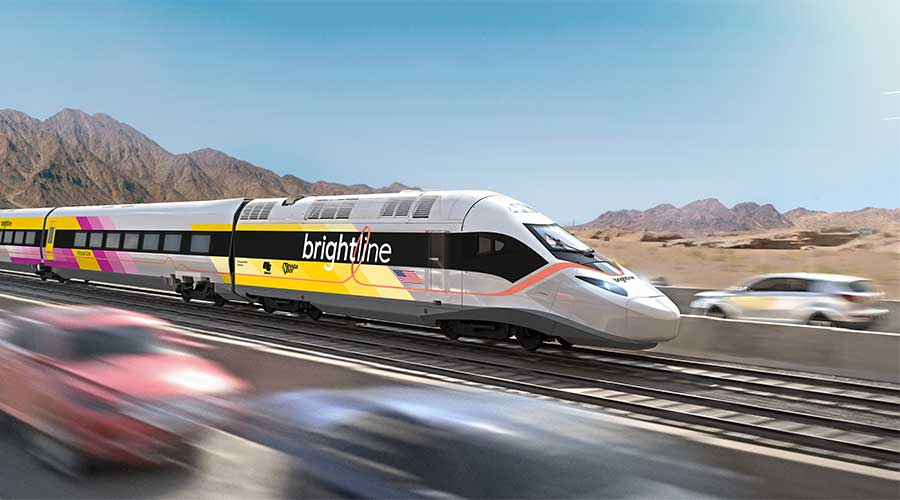Stay updated on news, articles and information for the rail industry
July 2016
Rail News: Passenger Rail
Expansions may finally be in the offing for Atlanta's transit system
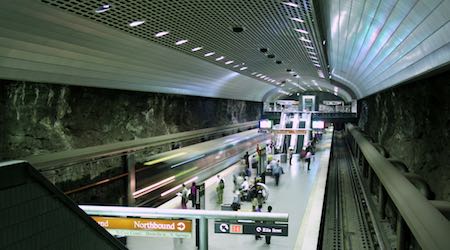
By Daniel Niepow, Associate Editor
The Atlanta region is one of the most sprawling metropolitan areas in the United States. In a 2014 study of 221 American metro areas by the nonprofit organization Smart Growth America, Atlanta came in second for urban sprawl, which was measured by development density, land-use mix and other factors. What’s more, the city ranked first on the "sprawl" list among metro areas with a population above 1 million.
With Atlanta as spread out as it is, only about 33 percent of the jobs in the city proper and just 18 percent of jobs in the larger metro area can be reached via public transportation, according to a 2011 Brookings Institution report. So, this November, city officials in Atlanta will introduce a ballot measure that will ask voters to approve a half-cent sales tax to fund $2.5 billion worth of transit improvements within Atlanta.
If the initiative gains voter approval, it could pave the way for significant expansions to the Metropolitan Atlanta Rapid Transit Authority's (MARTA) network, including a new light-rail system in the city, new subway stations along existing routes and a host of other investments that could help make commuting a more viable option for locals.
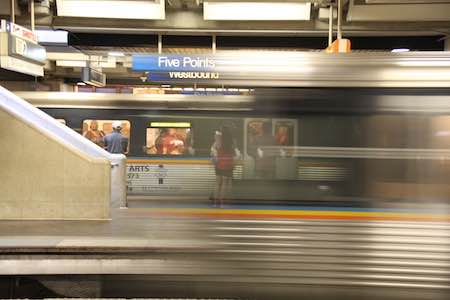 MARTA's current rail network spans just under 50 miles and comprises four lines that intersect at the Five Points station in downtown Atlanta.
MARTA's current rail network spans just under 50 miles and comprises four lines that intersect at the Five Points station in downtown Atlanta.Photo: MARTA
Although previous proposals to expand the city’s transit system have stalled, city officials and MARTA leaders are optimistic that the timing is right for the new measure to pass. In their view, many of the projects are long overdue.
"We are significantly behind where we should be in terms of the amount of track miles for a city or region of this size," said MARTA General Manager and Chief Executive Officer Keith Parker in a mid-May interview at the agency's headquarters in Atlanta’s Buckhead neighborhood. "We've done a number of studies that indicate significant pent-up demand — particularly on heavy-rail expansion."
One such study — conducted by McLaughlin and Associates Inc. in October 2015 — showed that 62 percent of likely voters in Fulton and DeKalb counties believed that expanding transit would help reduce road traffic in and around Atlanta. And nearly 70 percent of respondents favored extending MARTA's rail system along the Georgia State Route 400 highway to Alpharetta, Ga. Although that particular expansion project isn't on the city’s list of potential projects that would receive funding under the ballot measure, the support illustrates Atlantans' desire for more transit, MARTA officials believe.
Catching up
When the agency's first rail line opened in 1979, the system was expected to grow to a 100-mile network over time, Parker said. That’s what has happened at other transit-rail networks that opened around the same time, such as those in San Francisco and Washington, D.C. Today, MARTA’s rail network spans just under 50 miles and comprises four lines that intersect at the Five Points station in downtown Atlanta.
Various expansion plans have been proposed for years, but none has come to fruition. In 2012, for example, residents rejected a 1 percent sales tax increase that would have generated $7.2 billion for both transit and road improvements. Unlike the latest proposal — which focuses on projects within the city's borders — the 2012 measure would have provided funds for transportation projects across the Atlanta area's 10-county region.
"It's normal to see one or two failures on these types of referendums," Parker said, citing similar ballot initiatives in Phoenix, Seattle and Salt Lake City that voters initially rejected.
In February, state Rep. Brandon Beach (R-Alpharetta) introduced a bill that would allow Fulton and Dekalb counties to pursue a half-cent sales tax for transportation projects. Coupled with matching federal dollars, proceeds from that levy were estimated to generate $8 billion for MARTA. Although Beach's proposal ultimately failed in the state's General Assembly, a scaled-down version passed in April. The new bill called for an Atlanta-only half-cent sales tax, which would generate $2.5 billion over the next 40 years.
A new direction
In April, Georgia Gov. Nathan Deal signed the bill into law — a move that Atlanta Mayor Kasim Reed called "a turning point" for the city.
"Atlanta's residents want transit solutions that offer access to full economic and social participation in the life of our city," Reed said in a statement issued after the bill was passed. "By adding light rail, we will build a system that will sustain our city's growth for decades to come."
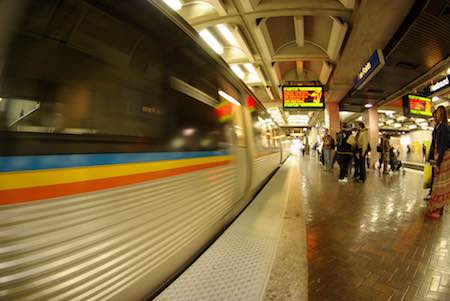 MARTA's expansion plans may include building new stations along existing heavy-rail routes to reach more riders.
MARTA's expansion plans may include building new stations along existing heavy-rail routes to reach more riders.Photo: MARTA
On June 20, the Atlanta City Council approved adding the referendum to the November ballot, although it hasn’t yet been determined which projects would be funded from the tax proceeds if the referendum passes.
"As funds become available, MARTA will work with the city to figure out which projects make sense," said agency spokesman Lyle Harris.
One potential project is a 22-mile light-rail loop along Atlanta's BeltLine, which is a former rail corridor that circles the city's core. This route would cost about $1.7 billion.
The funds also could go toward adding "infill" stations to MARTA's heavy-rail routes. The stations would be placed between existing ones to reach new riders.
"Lots of people have told us there are areas in the city that are underserved. Infill stations could help with development around those areas," Parker said.
MARTA could build an infill station north of Atlanta's downtown at the Armour Yard along the Red and Gold lines, which could connect to the proposed BeltLine light-rail route. Agency officials are also mulling construction of two stations in the Mechanicsville and Murphy Crossing neighborhoods in the southwestern part of the city.
Building the Armour and Murphy Crossing stations would cost $100 million each, while the Mechanicsville Station is estimated at $55 million, according to Harris.
Other projects include extending heavy-rail west along Interstate 20, building a light-rail line between MARTA's Lindbergh and Avondale stations, rehabilitating various stations, and purchasing additional rail cars to improve capacity.
Businesses on board
The proposed expansion projects could open up job opportunities for residents or provide additional transportation options for workers, said Atlanta Convention and Visitors Bureau President and CEO William Pate in an email. A more extensive transit system could be a boon for business in other ways, too.
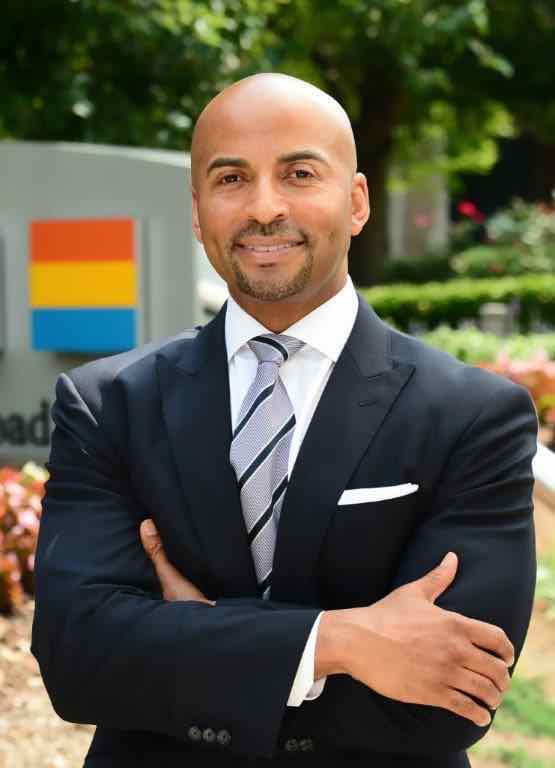 "We've done a number of studies that indicate significant pent-up demand — particularly on heavy-rail expansion," says Keith Parker, MARTA's general manager and CEO.
"We've done a number of studies that indicate significant pent-up demand — particularly on heavy-rail expansion," says Keith Parker, MARTA's general manager and CEO.Photo: MARTA
"There's a financial benefit to moving people around easily as they tend to explore more of the destination, which spreads the financial benefit of their visit across the city," he said.
Even before news emerged of the potential expansions, several big-name companies took an interest in locating near MARTA rail stations. In February 2014, State Farm Insurance Co. announced plans to build a new four-tower campus in Atlanta, with one of the towers located above the agency’s Dunwoody Station. The company plans to house 10,000 employees at the new site.
"They told us that a prerequisite for their location decision was being at a MARTA station," Parker said.
State Farm's 2.2-million-square-foot campus is expected to be completed late this year.
In addition, Mercedes Benz plans to build a new U.S. headquarters in Atlanta and has cited access to MARTA among its reasons for locating there.
Regardless of whether voters approve the sales tax increase, MARTA is pushing ahead with a slew of other non-expansion-related projects, including transit-oriented development (TOD) plans and state-of-good-repair work.
TOD projects in the works
This year, MARTA expects to break ground on at least three TOD projects, including one at its Chamblee Station. In September 2015, MARTA selected a joint venture comprising Pattillo Industrial Real Estate and Parkside Partners LLC to help develop 13,000 square feet of retail and 38,000 square feet of office space near the station.
In late 2017, MARTA plans to begin construction on a TOD project near its Brookhaven/Oglethorpe station, which opened in 1984. The agency will proceed with the project after holding public meetings and completing a rezoning request, said Parker, noting that it’s the largest TOD endeavor the agency has initiated.
For the project's first phase, Integral Group LLC and Transwestern Development Co. have been tapped to build 330 apartments, as well as retail and office space. Additional phases could include senior housing and a hotel.
Both TOD projects will transform what are now parking lots into spaces that will improve the surrounding neighborhood and bring economic development, Parker said.
"The TOD program has been one of our great successes," he added.
And indeed, MARTA has had its share of success. Since Parker took over in 2012, the agency has had a balanced budget for three consecutive years, along with a steadily improving bond rating. In fiscal-year 2013, MARTA balanced its budget for the first time in 15 years.
Boosting transparency
Plus, the agency closed out FY2015 with an extra $30 million in its reserves, and Parker expects the agency will finish FY2016 — which ended June 30 — with another $30 million in reserves.
It's been quite a turnaround since 2012, when the agency was originally projected to lose $33 million. These and other achievements may help convince voters to approve the sales tax increase, MARTA execs believe.
"I think a big part of the successes we've found have been in a much more open and transparent MARTA, where we've spent a considerable amount of time with legislators, with neighborhood leaders and with citizens," Parker said.
The agency's transparency efforts have included a series of roundtable meetings with media organizations — something the agency will continue doing as the November ballot draws nearer. Those sessions help to spread the word about MARTA's plans, Parker said.
MARTA officials also are doing what they can to keep the system in good working order. Agency officials are considering buying 250 new rail cars to replace older units, some of which are as old as 30 years. Since the agency is in the procurement phase, it’s not yet certain when the new cars will be purchased and put into service.
"When we take the older units out of service, they will have exceeded their expected life," said Joe Erves, senior director of operations at MARTA.
The agency also is entering the fourth phase of an AC track conversion that has been underway for more than five years. The $37 million project is expected to wrap up within the next three years, Erves estimated.
A focus on maintenance
Additionally, MARTA is overhauling its supervisory control and data acquisition (SCADA) and train control computer systems. The $200 million project will help improve efficiency and allow for faster response times, agency officials said.
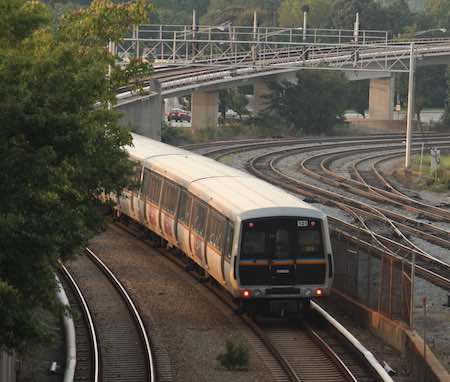 The agency is entering the fourth phase of an AC track conversion that has been underway for more than five years.
The agency is entering the fourth phase of an AC track conversion that has been underway for more than five years.
Photo: MARTA
"We have not provided an update or any type of major rehab or modification on the train controls on the SCADA side of the house since probably the [1996] Olympics," which were held in Atlanta, Erves said. "There was an extreme need to replace that system."
In conjunction with the train control and SCADA upgrades, MARTA is building a facility to house rail services and bus control, police communications and emergency operations.
The new facility will include staff offices, training space, a computer equipment and maintenance room, and all communications and train control equipment for the new systems.
And in November 2015, MARTA signed a $198.5 million contract to overhaul and upgrade the ventilation systems in its rail tunnels. The six-year base contract totaled $165 million, with an additional $33.5 million in contract options that include an extended warranty, hardware refresh and provisions for long-term system and operations maintenance, MARTA officials said in a press release issued at the time.
"We have to look at the state of the assets as they age," Erves added.
To be sure, the success or failure of the November referendum depends, in part, on MARTA ensuring that its system continues to operate smoothly.
Even if Atlanta's latest sales tax increase proposal fails, MARTA execs are ready to work with the city to find a way to "get it right the next time," Parker said.
"But I'm generally optimistic — considering the amount of pent-up demand that's out there and the positive momentum we have right now — that it’ll be successful," he added.
Email comments or questions to daniel.niepow@tradepress.com.
Putting the 'Art' in MARTA
Last month, the Metropolitan Atlanta Rapid Transit Authority's (MARTA) board voted to commit up to 1 percent of the agency's annual capital budget to fund an "Arts in Transit" program starting in fiscal-year 2017, which began July 1. Estimated to total $2.5 million each year, the funds will be used to pay for installing new artwork at stations, facilities and other transit infrastructure.
In addition, the money will go toward rehabilitating existing artwork and developing a schedule of ongoing creative activities for customers, employees, artists and other stakeholders.
The art is intended to make the rider experience more inviting and appealing, says MARTA spokesman Lyle Harris, who chairs the art program.
"We're looking for art that is functional — things that inspire and enlighten and enliven stations, but also have a practical, pragmatic purpose," Harris says.
MARTA has had an arts program since the agency's inception, although the program initially was restricted to rail stations and provided a maximum $50,000 per station for artwork. To revamp the program, MARTA consulted with peer transit systems that have developed similar art-in-transit plans, such as the Los Angeles County Metropolitan Transportation Authority and the Southeastern Pennsylvania Transportation Authority.
After hiring an administrator to manage the program, MARTA plans to work with artists from across the United States and around the world. The agency also will create an arts council to refine and guide the process.
Incorporating more art in stations has another tangible benefit.
"We found that artwork in transit actually reduces vandalism," says MARTA General Manager and Chief Executive Officer Keith Parker. "We're really energized about turning our transit stations into places people actually want to visit."
— Daniel Niepow
Keywords
Browse articles on Metropolitan Atlanta Rapid Transit Authority MARTA MARTA expansions MARTA rail Atlanta transit Atlanta BeltLine Atlanta light-rail Keith Parker Joe Erves Atlanta Convention and Visitors Bureau William Pate transit sales tax sales tax initiatives transit fundingContact Progressive Railroading editorial staff.


 2025 MOW Spending Report: Passenger-rail programs
2025 MOW Spending Report: Passenger-rail programs
 Gardner steps down as Amtrak CEO
Gardner steps down as Amtrak CEO
 Guest comment: Oliver Wyman’s David Hunt
Guest comment: Oliver Wyman’s David Hunt
 Women of Influence in Rail eBook
Women of Influence in Rail eBook
 railPrime
railPrime






